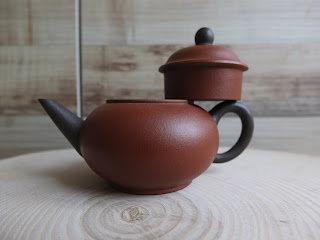When I think of fried rice, I will imagine a Chinese chef literally frying rice using a wok over a big fire. This is one dish that I enjoy eating especially as a 'take away' meal when I have to eat dinner alone.
It was about 2 weeks ago while shopping for Chinese tea bags that I came across this Fried Rice Green Tea. If you continue to read the label, this tea is Genmai Cha. I went online to get more information and Genmai tea is actually green tea blended with roasted rice. This tea, seemed to suggest, from the picture on the teabox, that this is a popular tea in Japan. I remembered that I had tried Hoji tea in Nagoya a few years ago and that tea was actually roasted green tea. I remembered the tea tasted earthy and had a mild sweet aftertaste. I might still have a packet of Hoji tea in my freezer.
My conclusion is that 'Fried Rice Green Tea' must be an episode of 'lost in translation'. There was a time in the 80s and 90s where English translations were sometimes taken too literally that reading them would sound frightening or humorous. The 2nd pix was sent to me by a friend some time ago. I have no idea who took this pix. I will give credit to the pix when I get the information.
Sadly, there is no fried rice in this tea. I am going to my tea cupboard to choose a tea to brew today. Perhaps a pu erh tea biscuit.











